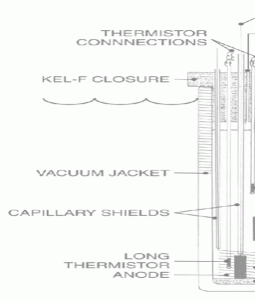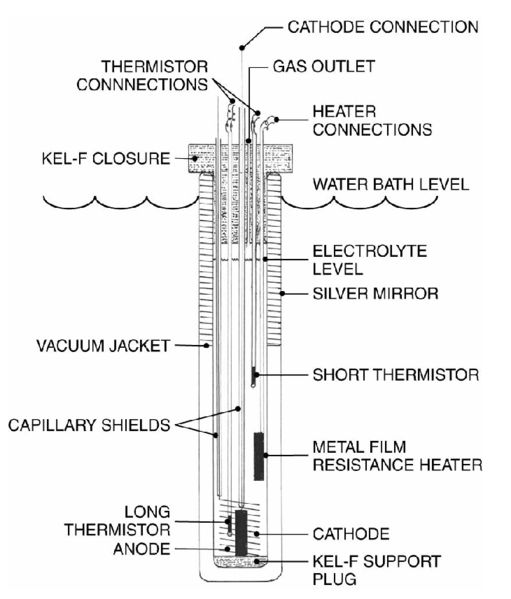Possibilities of viable cold fusion arise in Italy
Date Posted: June 7, 2011
Print Edition: May 27, 2011
By Jason Ho (Science Whiz) – Email
 Quite recently, there has been some commotion in scientific communities across Europe, as two Italian inventors have claimed to have created a device which consumes much less energy than it generates, through the mechanism of nuclear fusion. While nuclear fission has received some bad press lately in light of natural disasters, nuclear fusion as a source of energy has been the topic of investigation since the 1930s (as well as the topic of many science fiction films since). If you’re a bit rusty on the details of fusion, here it is in a nutshell:
Quite recently, there has been some commotion in scientific communities across Europe, as two Italian inventors have claimed to have created a device which consumes much less energy than it generates, through the mechanism of nuclear fusion. While nuclear fission has received some bad press lately in light of natural disasters, nuclear fusion as a source of energy has been the topic of investigation since the 1930s (as well as the topic of many science fiction films since). If you’re a bit rusty on the details of fusion, here it is in a nutshell:
While fission involves splitting the nucleus (the dense center of an atom), fusion is the opposite process. With nuclear fusion, smaller, lighter atoms are smashed together and their centers are fused into larger nuclei. Both of these processes produce energy, but fusion can produce 3 to 4 times more energy than fission. Also, nuclear fusion involves smaller, more stable elements, which don’t create the same radioactive by-products as fission. The best example we have of nuclear fusion as a source of power is in our very own solar system. The sun is a giant ball of nuclear fusion, with hydrogen molecules fusing together to produce helium. The fusing of the atoms releases energy in the form of heat.
Now, if we know exactly how fusion works, why doesn’t everyone have a miniature fusion reactor in their backyard? The issue lies in the nature of the nucleus. The center of the atom is made up of smaller particles, namely, protons and neutrons. What makes fusion difficult are the protons inside of the nucleus, as each proton carries a positive electric charge.
The problem we face with nuclear fusion is something we call the Coulombic barrier. When two positively-charged objects approach each other (as is the case with nuclear fusion), they experience increasing repulsive forces as they get closer and closer together. As an analogy, picture trying to press the south pole of two magnets together. With electrical charges, the effect is even greater.
It turns out that enormous amounts of energy are needed to overcome this barrier. Scientists have performed nuclear fusion, but at the moment it takes up much more energy to perform than it releases. It is an active field of research, however, and there are several companies currently testing methods of viable controlled fusion. These projects are an attempt at recreating the reactions inside the sun, which take place at temperatures in the order of thousands of degrees.
This leads us back to the claim from two Italian scientists, Andrea Rossi and Sergio Foucardi. The device they have made, they claim, utilizes Low-Energy Nuclear Reactions (LENR). From their original paper, in one trial they record an input energy of 0.2 kilowatt-hours, and an output of 83 kilowatt-hours (in contrast, using a typical, 60 Watt incandescent light-bulb for one thousand hours requires 60 kilowatt-hours of energy). The machine, called the “Energy-Catalyser”, weighs around 4 kg, and fits quite easily on a tabletop. The remarkable thing about their claims is that the reaction takes place at unexpectedly low temperatures, and the device appears to work without emitting recordable levels of radiation.
Due to past fraudulent claims of so-called low energy “cold fusion,” scientists are sceptical to accept Rossi and Foucardi’s claims. Several independent organizations have tested the device, and all of the claims made by the inventors seem to hold. As of the beginning of May, companies in both Greece and the USA have signed business agreements with Rossi to produce the device. Much more investigation is required into the device and the science behind it, as the mechanism behind how and why the device work is unclear. The next year or so should shed a lot of light on what is going on, and if we indeed are heading towards the advent of cold fusion.
Jason Ho is a BSc. student at UFV currently in his fourth year of study in the areas of Physics and Chemistry. He enjoys jazz music, gazing into the cosmos, and long walks on the beach.


